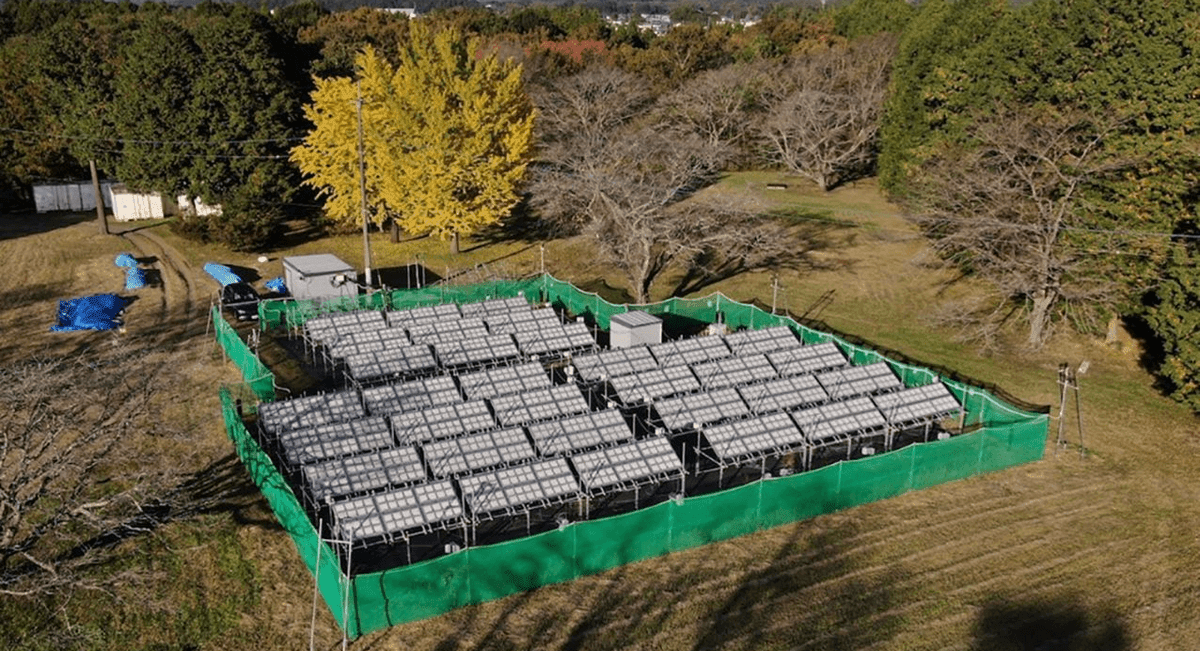Sunlight Can Split Water Directly Into Hydrogen For The Fuel Of The Future

An experiment used sunlight and a certain type of helper, called a photocatalyst, to create 1,076 square feet of area to convert sunlight into hydrogen without carbon for three years, showing the idea is worth investigating. This approach currently uses less energy than making electricity first, then converting it into hydrogen, but it may make the production even more affordable in the long run.
.
But relies heavily on the conversion to electricity as an intermediary step. Professors Takashi Hisatomi and Kazunari Domen of Shinshu University believe we may be able to do better by bypassing that stage, and have demonstrated the possibility, though not yet its practicality.
.
As its name implies, photocatalysts spark chemical reactions whenever they are exposed to light. Among many other promising applications, the potential for breaking down water into hydrogen and oxygen holds significant transformative possibilities.
A research team, led by Hisatomi and Domen, created a 328-foot reactor prototype using sheets made from a compound called strontium titanium oxide doped with aluminum (SrTiO:Al). Several additives were added to a liquid solution covering these sheets, and then the solvent was allowed to evaporate. Water flowed past the active ingredients and gases were collected in tubes.
Many alternatives to traditional metal-based catalysts are being researched, including materials made from cheaper, readily available resources. A substantial amount of research is ongoing to enhance this technology, but even if each stage were 30 percent efficient, it's estimated that the overall efficiency of using hydrogen fuel would only be about 9 percent, equivalent to harnessing the energy of the Sun.
If suitable photocatalysts had an efficiency of 10 percent, it would mean getting more hydrogen from the same amount of sunlight. This would likely allow green hydrogen to finally become competitive with grey hydrogen in terms of price.
Unfortunately, that is not currently possible. Studies conducted in a lab setting, using simulated sunlight, have yielded disappointing efficiency rates. It's common for pioneering efforts like this to experience even greater setbacks when moved from a controlled environment to real-world conditions, but in this scenario, those involved were in for a pleasant surprise.
"Our system can convert solar energy more efficiently, using the UV-responsive photocatalyst," said Hisatomi. This is because the standard for simulating sunlight worldwide is based on conditions at higher latitudes than Tokyo, the location of the test reactor. In fact, science has historically skewed towards higher latitudes, even in solar energy research. As a result, reactors located in the tropics, which typically receive more UV radiation in their sunlight, are likely to perform even better.
Notwithstanding progress, the work remains far from where it should be. “At this point, the efficiency under simulated standard sunlight is at best 1%, and it's unlikely to surpass 5% under natural sunlight,” Hisatomi stated.
Inefficient reactors not only increase costs: they also require a practical amount of space due to the large amount of sunlight they need to absorb.
Larger reactors would somewhat boost efficiency, but genuine progress hinges on discovering more efficient photocatalysts. Research in this field began with titanium dioxide, which is widely available but not very efficient, and now centers on much more intricate catalysts such as RhCrO/SrTiO:Al.
Other issues that need to be addressed apply to all forms of water splitting, such as preventing hydrogen and oxygen from recombining, sometimes explosively, before they can be safely stored separately.
Concerning claims of solar cell efficiency, consistent safety regulations and standards for efficiency must be present.
At present, there is a significant price gap between hydrogen produced through this method and the traditional polluting approach. Nevertheless, Domen remains undeterred. If advanced photocatalysts become available, he said; "Many researchers would take a serious stab at developing mass production technology and gas separation procedures, as well as building large-scale facilities. This, in turn, would revolutionize the way people, including policymakers, perceive solar energy conversion, and hasten the development of infrastructure, legislation, and regulations related to solar fuels."
We previously underestimated the potential of this source, but it may end up saving us, however, the feasibility of obtaining it on a large scale has been minimally investigated.
.
Posting Komentar